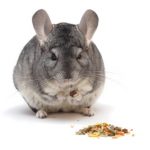
Skin disorders ferret, rabbits and rodents
Skin disorders ferret, rabbits and rodents
The new pets, called "NAC", correspond to a set of animal grouping Rodents, les Lagomorphes, the birds, the reptiles, ferrets…
We are interested to dermatological disorders some of them : rodents, ferrets and rabbits.
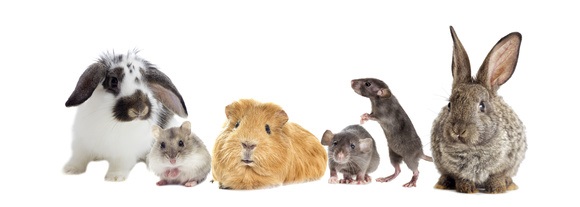
What are the causes of these diseases ?
Just like dogs and cats, many factors are involved in causing skin disorders in ferrets, rabbits or rodents.
Parasitic diseases
All these small animals can be infected by mites, Mushroom, insects that are responsible for skin lesions, itching, hair loss ...
– Among the mites, the cheylétielles are responsible for pseudo-mange in guinea pigs and rabbits, Demodex parasites gerbil, hamster or guinea pig, and many gales officials mites are present in all rodents, rabbits and ferrets.
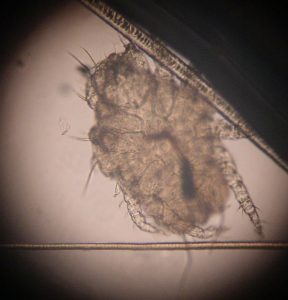
Parasite Cheyletiella observed microscopically
Parasite Cheyletiella observed microscopically
- Among insects, lice especially appreciate the skin of guinea pigs and ferrets. Fleas commonly infect ferrets.
- Finally, Dermatophytes are the fungi responsible for ringworm in ferrets, the rabbit, The test-subject, gerbil, the hamster, and rat, the mouse : no one is spared !
Viruses can also cause skin disorders
- This is the case of virus Distemper in ferrets in whom it causes, Furthermore respiratory and nervous symptoms, scabs and redness around the eyes and on the face, associated with itching.
- In rabbits, Myxomatosis virus causes, inter alia, the appearance of "red spots" on the eyelids, the ears, the nose, genitals…
In both cases, vaccination can help protect your pet.
Tumors
Although it is not the primary cause of skin problems of these small animals, rabbits, ferrets and rodents may suffer from skin tumors :
This is the case, for example, mast cell tumors in ferrets or rats kératocanthome.
Our rodents may suffer from nutritional deficiencies that affect the state of their skin.
These deficiencies are, for example, Frequently in chinchillas.
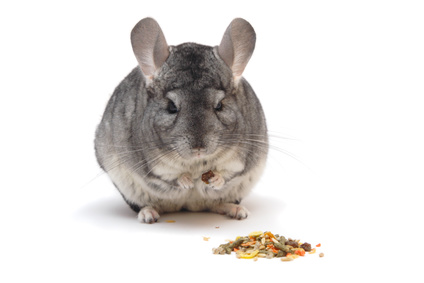
- Indeed, a fatty acid deficiency causes appearance of the home areas depilated and skin ulcers.
- Chinchillas can also be reached from the "disease of the yellow ears" due to a vitamin E deficiency and certain amino acids. As indicated by his name, this disease is manifested by a yellowing of the ears.
- Finally, an unbalanced diet can result in the chinchilla's "pecking", that is to say, the animal tears his hair. Note that pecking is also observed in other circumstances (stress, unsuitable environment ...).
Each species with very specific nutritional needs. A gerbil has different needs than a guinea pig, a chinchilla or a rabbit… Ignoring these specificities can quickly lead to deficiencies in your pet and have some serious impact on his health. Your veterinarian will advise you and give you a balanced diet for your pet.
Bacteria can also grow on the skin of ferrets, rabbits and rodents, and lead to significant skin lesions.
The environment of small animals is very important.
- In young rats, too hot and dry environment (especially in winter when there is heating in homes) may result in the appearance of lesions on their tail.
- As for rabbits, they may have rashes and infections in the legs due to poor hygiene of their cage, or if the straw is too hard or wire floor.
Hormonal imbalances are common in ferrets.
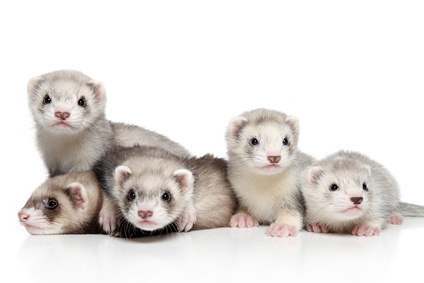
- The ferrets that are not sterilized and which do not breed secrete too much estrogen. Symptoms, a symmetrical loss of hair on the sides and the tail is frequent.
- Furthermore, ferrets can be victims of a disorder of the adrenal glands, which also causes hair loss and possibly other damage like redness, scabs ...
Behavioral disorders
Behavioral problems may have dermatological effects in small animals, as in dogs and cats.
- For example, chromodacryorrhea is a disease that affects small rodents such as rats and gerbils and which is manifested by red scabs around the eyes and nostrils. This is favored by a lack of grooming. The pigments in the lacrimal secretions then build up around the eyes and nostrils.
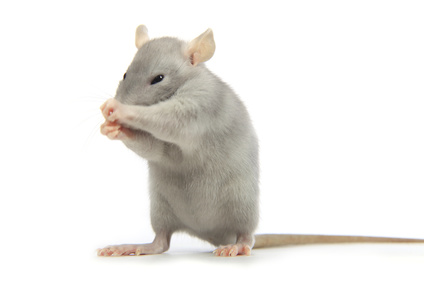
- In gerbils, which have a highly developed burrowing behavior, nasal dermatitis may appear: these are localized skin lesions around the nostrils and upper lip. A force to bury their noses everywhere, gerbils to create lesions by friction.
Ear infections are also common in these animals.
- The appearance of an ear infection in small animals is often associated with the presence of parasites (as mange ear example, or fungi), or in the presence of bacteria.
§
The factors mentioned above lead, in ferrets, rabbits and rodents, numerous skin lesions that vary causes. One can observe in particular redness, crusts, hair loss, ulcers, dandruff, nodules, sometimes accompanied by itching.
Early discussion with your veterinarian, any abnormality detected in, will treat the cause as soon as possible and to avoid complications.
As a precaution, it is essential to vaccinate your pet as regards the diseases for which a vaccine exists, give him a balanced diet, to take care of its environment, to treat against parasites, and to offer an environment and a lifestyle suited to its needs. Ask your veterinarian for advice ! It will give you all the information necessary to avoid the many skin problems.
Author : Dr. Magali Pernot. Illustrator : Dr. Caroline Allard – Vetup®
